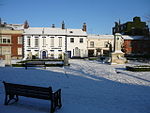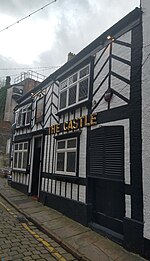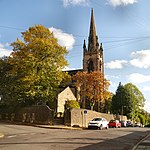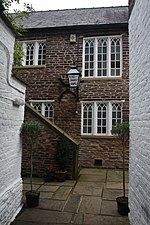Macclesfield Sunday School is in Roe Street, Macclesfield, Cheshire, England. It started in 1796 as a non-denominational Sunday School in Pickford Street, which catered for 40 children. It was founded by John Whitaker whose objective was "to lessen the sum of human wretchedness by diffusing religious knowledge and useful learning among the lower classes of society". Though chapels set up their denominational schools, the Sunday School committee in 1812 elected to erect a purpose-built school on Roe Street. The Big Sunday School had 1,127 boys and 1,324 girls on its books when it opened. The building is now known as The Old Sunday School and is part of Macclesfield Museums.
Sunday schools were first set up in the 1780s to provide education to working children on their one-day off from the factory. It was proposed by Robert Raikes, editor of the Gloucester Journal in an article in his paper and supported by many clergymen. It aimed to teach the youngsters reading, writing and ciphering and a knowledge of the Bible.In 1785, it was reported that 250,000 children were attending Sunday School and there were 5,000 in Manchester alone. By 1895, the Society for the Establishment and Promotion of Sunday Schools had distributed 91,915 spelling books, 24,232 Testaments and 5,360 Bibles. The Sunday School movement was cross-denominational, and through subscription built large buildings that could host public lectures as well as classrooms. In the early days, adults attended the same classes as the infants, as each were instructed in basic reading. In Macclesfield, the Methodists withdrew from the Large Sunday School and built their own, and the Anglicans set up their own "National" schools that acted as Sunday Schools and day schools. These schools were the precursors to a national system of education. Later, a ragged school was set up for the children of the poor, the rough sleepers and children from the workhouse.
The role of the Sunday Schools changed with the Education Act 1870. In the 1920s, they promoted sports, and it was common for teams to compete in a Sunday School League. They were social centres hosting amateur dramatics and concert parties. By the 1960s the term Sunday School could refer to the building and not to any education classes, and by the 1970s even the largest Sunday School at Stockport had been demolished. The Macclesfield Large Sunday School was rescued and converted into the Macclesfield Heritage Centre.










